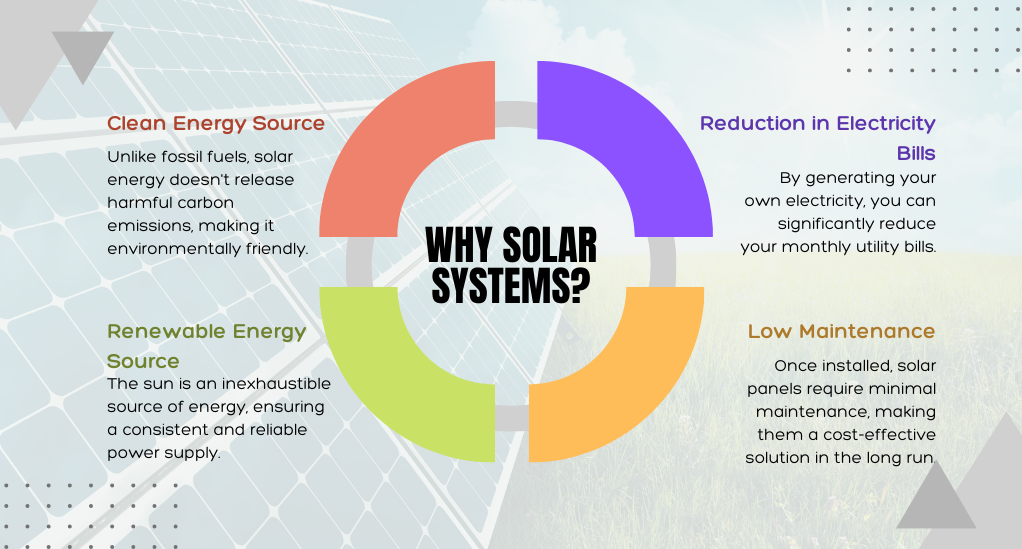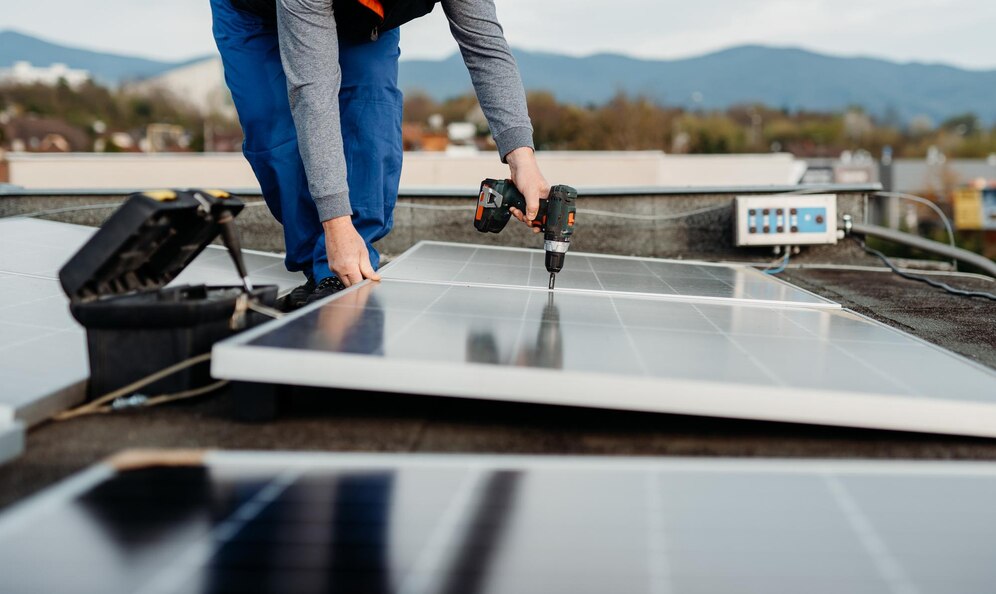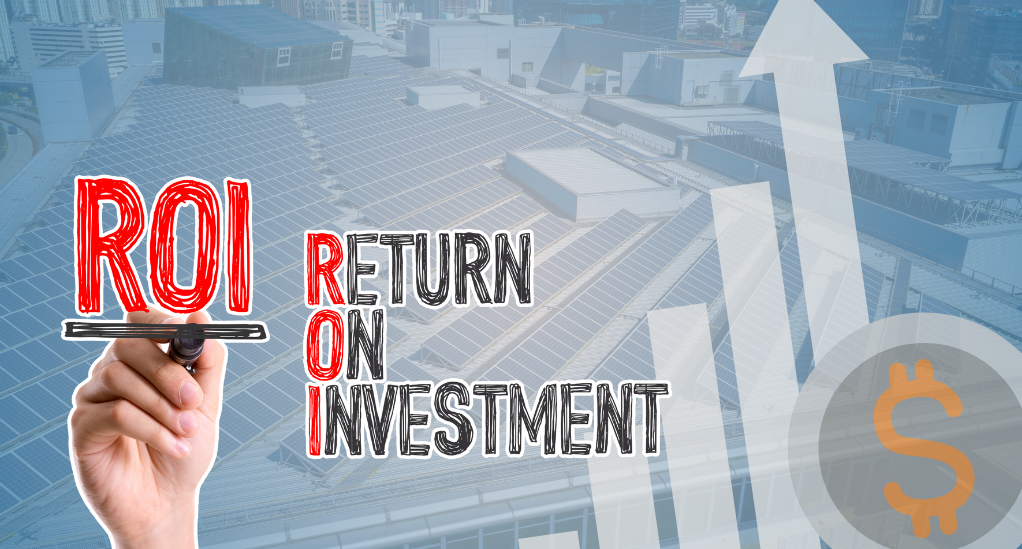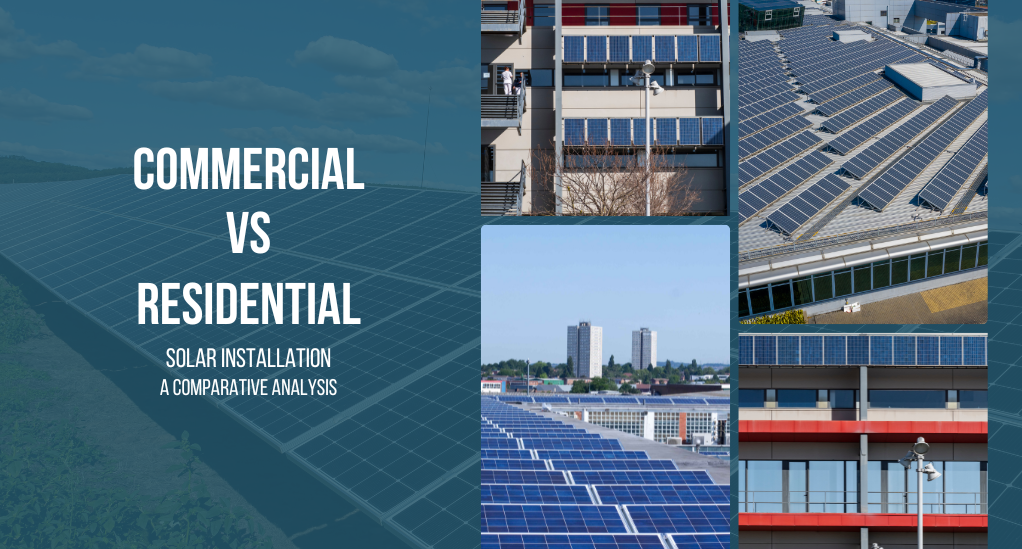The sun, a colossal ball of energy, has been the center of our solar system and the primary source of life on Earth for billions of years. Today, as we grapple with the challenges of climate change and the urgent need for sustainable energy sources, the sun has emerged as a beacon of hope in the form of solar power. Solar systems, which harness the sun’s energy and convert it into electricity, have seen a meteoric rise in popularity over the past few decades. From powering small gadgets to entire cities, the applications of solar energy are vast and varied. But when it comes to solar installations, not all are created equal. There are distinct differences between commercial and residential solar systems, and understanding these differences is crucial for anyone considering a solar investment.
Why Solar Systems?

Before delving into the specifics, it’s essential to understand why solar systems have become such a sought-after energy solution. Solar energy offers multiple benefits:
- Clean Energy Source: Unlike fossil fuels, solar energy doesn’t release harmful carbon emissions, making it environmentally friendly.
- Renewable Energy Source: The sun is an inexhaustible source of energy, ensuring a consistent and reliable power supply.
- Reduction in Electricity Bills: By generating your own electricity, you can significantly reduce your monthly utility bills.
- Low Maintenance: Once installed, solar panels require minimal maintenance, making them a cost-effective solution in the long run.
Commercial vs. Residential Solar: A Glimpse
At a glance, the primary difference between commercial and residential solar installations lies in their scale and purpose. Commercial installations are designed to power business establishments, factories, and large-scale operations. In contrast, residential systems are tailored for homes and small-scale use. This fundamental difference in application leads to variations in size, installation methods, costs, and more.
| Feature | Commercial Solar | Residential Solar |
|---|---|---|
| Size | Larger, designed for high energy consumption | Smaller, tailored for household use |
| Installation | Often on flat roofs, larger scale | Typically on pitched roofs, smaller scale |
| Cost | Higher initial investment but lower cost per watt | Lower initial investment but potentially higher cost per watt |
| Aesthetics | More flexible, often prioritizes function | Aesthetically pleasing designs to blend with home architecture |
| Placement Options | Rooftops, parking lots, open grounds | Limited to rooftops, some ground mounts |
As we proceed, we’ll dive deeper into each of these differences, providing a comprehensive understanding of what sets commercial and residential solar installations apart. Whether you’re a business owner looking to make a sustainable switch or a homeowner aiming to reduce your carbon footprint, this guide will equip you with the knowledge you need to make an informed decision.
Size & Scope of Systems
Solar installations, whether commercial or residential, are fundamentally designed to capture sunlight and convert it into usable electricity. However, the scale at which they operate and the amount of energy they need to produce can vary significantly. This difference in scale and scope is primarily influenced by the energy consumption patterns of commercial establishments versus residential homes.
Understanding Energy Consumption
A commercial establishment, such as a factory, office building, or shopping mall, typically consumes a much larger amount of electricity than a residential home. This is due to several factors:
- Operational Hours: Commercial establishments often operate for extended hours, sometimes round the clock, leading to higher energy consumption.
- Equipment & Machinery: Businesses, especially those in the manufacturing sector, use heavy machinery that requires significant power.
- Lighting & HVAC: Large commercial spaces require extensive lighting systems and HVAC (Heating, Ventilation, and Air Conditioning) systems, further driving up energy needs.
In contrast, residential homes have a more predictable and often lower energy consumption pattern, influenced by daily household activities, appliances, and the number of occupants.
Solar Panel Dimensions: A Comparative Look
Given the differences in energy consumption, commercial solar installations are generally larger in size compared to their residential counterparts.
While commercial solar panels are larger, it’s essential to note that the size difference doesn’t necessarily translate to a linear increase in energy production. The efficiency of the panels, the quality of the solar cells, and the installation’s orientation all play crucial roles in determining the actual energy output.
Energy Requirements: A Matter of Scale
To further illustrate the difference in scale:
- A single-family home might require a system capacity of 5-10 kW (kilowatts) to meet its energy needs.
- In contrast, a commercial building, depending on its size and nature of business, might need a system ranging from 50 kW to several megawatts.
This stark difference in energy requirements directly influences the size and scope of the solar installations for commercial and residential purposes.
Installation Methods

The process of installing solar panels involves several steps, from site assessment to mounting the panels and connecting them to the grid. While the core principles remain consistent, the methods and challenges differ between commercial and residential installations.
Site Assessment & Preparation
Before any installation begins, a thorough site assessment is crucial. This assessment determines the feasibility of the installation, optimal panel placement, and potential energy yield.
- Commercial: Given the larger scale, commercial site assessments often involve evaluating vast rooftops or ground spaces. Factors like roof load-bearing capacity, potential shading from nearby structures, and accessibility for maintenance are considered.
- Residential: For homes, the assessment focuses on roof integrity, orientation for maximum sunlight exposure, and potential obstructions like trees or neighboring buildings.
Mounting Systems
The type of roof or ground space dictates the mounting system used:
- Commercial: Most commercial buildings have flat roofs. Solar panels for such roofs are typically mounted using ballasted racking systems that don’t penetrate the roof. These systems use weights (ballasts) to hold the panels in place. Additionally, ground-mounted systems might be used for large-scale commercial installations, especially if there’s ample unused land available.
- Residential: Residential installations predominantly occur on pitched roofs. These require penetrating racking systems that securely anchor the panels to the roof structure. Ground mounts can also be an option for homes with spacious yards.
Installation Timeframe
The time it takes to complete an installation varies based on the system’s size and complexity:
- Commercial: Given the larger scale and potential complexities, commercial installations can take several weeks to a month. Factors like coordinating with building operations, ensuring minimal disruption to business activities, and managing larger teams can extend the timeframe.
- Residential: Home installations are typically quicker, often completed within two to three days. The process is streamlined, given the smaller scale and fewer complexities.
Safety & Regulations
Both commercial and residential installations must adhere to local building codes, safety regulations, and electrical standards. However, commercial projects often face more stringent regulatory scrutiny due to their larger scale and potential impact on the local electrical grid.
Aesthetic Differences
While functionality is paramount, aesthetics play a significant role, especially in residential installations.
- Commercial: For businesses, the primary focus is on maximizing energy yield. Aesthetics, while considered, might take a backseat to functionality. Panels are often white, reflecting more sunlight and keeping the building cooler.
- Residential: Homeowners tend to prefer solar installations that blend seamlessly with their home’s architecture. As a result, residential solar panels often come in black or white, with many opting for all-black panels for a sleeker look.
It’s worth noting that advancements in solar technology have led to the development of solar tiles and shingles, offering homeowners aesthetically pleasing options that integrate seamlessly with traditional roofing materials.
Cost Implications
One of the most significant considerations for anyone looking to invest in solar installations is the cost. While the long-term benefits of solar energy in terms of savings and sustainability are evident, the initial investment can be substantial. Let’s break down the cost factors for both commercial and residential installations.
Initial Investment
- Commercial: The sheer scale of commercial installations means a higher initial investment. Factors like larger panel sizes, more extensive mounting systems, and additional infrastructure can drive up costs. However, economies of scale often come into play. When calculated on a per-watt basis, commercial installations might offer a lower cost, especially for large-scale projects.
- Residential: Residential installations, being smaller, generally have a lower total cost. However, on a per-watt basis, they might be slightly more expensive than commercial installations due to the lack of economies of scale.
| Cost Component | Commercial Solar | Residential Solar |
|---|---|---|
| Initial Investment | Higher due to scale | Generally lower |
| Cost Per Watt | Often lower due to economies of scale | Might be slightly higher |
| Maintenance | Periodic, might involve contracts with service providers | Minimal, occasional cleaning and checks |
| Incentives & Rebates | Available, based on local regulations | Available, might vary based on region |
Return on Investment (ROI)

Both commercial and residential solar installations provide notable returns on investment (ROI), although the timeframes for realizing these returns may vary. In the commercial sector, businesses can reap substantial savings in operational costs, resulting in significant long-term gains. Furthermore, commercial entities can leverage benefits such as tax breaks, accelerated depreciation, and various financial incentives, expediting the ROI process. Conversely, for residential installations, homeowners typically experience a direct reduction in their electricity bills, leading to an ROI typically within a few years. The exact timeline hinges on factors like local electricity rates, solar energy production, and the availability of incentives, underscoring the adaptability of solar investments to diverse contexts and preferences.
Panel Placement & Options
The flexibility in panel placement can significantly influence the efficiency and aesthetics of a solar installation.
- Commercial: Businesses often have multiple options when it comes to panel placement. While rooftops are common, commercial entities can also explore solar-paneled parking lots, which serve a dual purpose. Open ground installations on unused land are another viable option, especially for businesses with expansive premises.
- Residential: Homeowners are somewhat limited in terms of placement options. While rooftops are the primary choice, those with spacious yards can consider ground-mounted systems. However, neighborhood restrictions and aesthetics can influence these decisions.
Benefits & Commonalities
Despite their distinctions, commercial and residential solar installations offer common advantages. Firstly, they significantly contribute to sustainability by reducing the carbon footprint, aligning with our environmental responsibilities. Secondly, these installations offer financial benefits through long-term savings, gradually diminishing reliance on grid electricity and its accompanying expenses. Lastly, they boost property values, making solar investments lucrative for both businesses and homeowners, further emphasizing the multifaceted appeal of solar energy solutions.
Conclusion
The sun, an enduring source of energy for millennia, now serves as a beacon of hope in the form of solar power. Solar systems have rapidly gained popularity due to their ability to harness clean, renewable energy. Whether for businesses or homes, solar installations offer numerous advantages, including reduced emissions, lower electricity bills, and increased property value.
Despite differences in scale, aesthetics, and cost considerations between commercial and residential solar installations, both share a common vision: a commitment to sustainability and a cleaner, more economically sound future. As we continue to harness the sun’s energy, we move closer to a world where solar power is an integral part of our daily lives, reducing our carbon footprint and ensuring a brighter, greener tomorrow.

